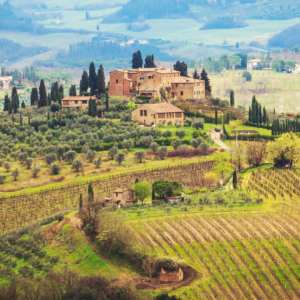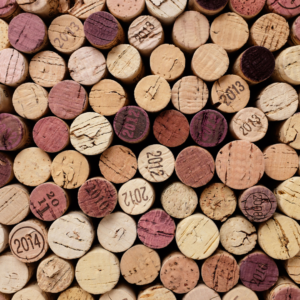Wine has been an integral part of Italian culture for centuries, with Italy being one of the largest wine-producing countries in the world. Italian wines are famous for their rich history, diverse range of flavors, and unique characteristics. For beginners looking to explore the world of Italian wine, it can be a bit overwhelming. In this guide, we’ll break down some of the basics of Italian wine, so you can start your journey with confidence.
 Regions of Italian Wine Production
Regions of Italian Wine Production
Italian wine can be classified in several ways, but the most common method is by region. Italy has twenty different regions, each with its own unique grape varieties, terroir, and winemaking traditions. Here are some of the most popular regions and the wines they produce:
- Tuscany – Tuscany is home to some of the most famous Italian wines, such as Chianti, Brunello di Montalcino, and Vino Nobile di Montepulciano. These wines are made primarily from the Sangiovese grape and are known for their complex flavors and aromas.
- Piedmont – Located in the northwest of Italy, Piedmont is famous for producing some of Italy’s finest red wines, including Barolo and Barbaresco. These wines are made from the Nebbiolo grape and are known for their full-bodied and tannic character.
- Veneto – Veneto is one of the largest wine regions in Italy and produces a range of white and red wines. The most famous wine from this region is Prosecco, a sparkling wine made from the Glera grape.
- Sicily – Sicily is the largest island in the Mediterranean and produces a range of unique wines, including Nero d’Avola and Etna Rosso. These wines are known for their intense flavors and aromas, with a hint of volcanic ash from the region’s active volcano, Mount Etna.
 Understanding Italian Wine Labels
Understanding Italian Wine Labels
Italian wine labels can be confusing for beginners, as they often contain a lot of information. However, understanding the label is crucial to choosing the right wine for your taste. Here are some key factors to look for on an Italian wine label:
- Denominazione di Origine Controllata (DOC) – Denominazione di Origine Controllata (or “designation of controlled origin”). This is a quality assurance label that guarantees the wine was produced in a specific region and adheres to specific winemaking regulations, including the harvesting and production process and the features of that particular wine when bottled. There are over 300 DOC wines!
- Denominazione di Origine Controllata e Garantita (DOCG) – Denominazione di Origine Controllata e Garantita (or “Denomination of Controlled and Guaranteed Origin”). With the upgrade of “G”, this qualification also includes the color, taste, perfume, exact alcoholic proof, and the bottling process. Only 77 wines have this strictly enforced quality certification, making it quite the badge of honor!
- Grape variety – Italian wine labels often list the grape variety used to make the wine. This can be helpful for identifying wines you may enjoy based on your preferences.
- Vintage – The vintage is the year in which the grapes were harvested. This can be important, as some years may be better for certain grape varieties or regions than others.
 Pairing Italian Wine with Food
Pairing Italian Wine with Food
One of the best things about Italian wine is how well it pairs with food. Here are some classic pairings to keep in mind:
- Chianti – Chianti pairs well with tomato-based pasta dishes and grilled meats.
- Barolo – Barolo pairs well with hearty meat dishes, such as beef stew or game meat.
- Prosecco – Prosecco is a great wine to pair with appetizers and light dishes, such as bruschetta or seafood.
- Nero d’Avola – Nero d’Avola pairs well with spicy dishes, such as curry or Mexican cuisine..
 Ordering Wine in Italy
Ordering Wine in Italy
Next time you find yourself in a restaurant in Italy, remember these 3 tips to order and enjoy it like a local!
- If you’re used to automatically skipping the “house wine” option at home, think again! In Italy, the “vino della casa” is usually high quality and a safe bet.
- While some countries (the U.S. included) usually have two options (glass or bottle), you’ll have a few more to choose from in Italy. Bottles can be full sized (750 cl) or half (375 cl). If you’re ordering the house wine (see tip #1!), you’ll be able to choose from a liter, half liter, or quarter liter.
- Don’t forget to cheers! “Salute” or “cin cin” are the most common ways to raise your glasses.
In the end, enjoying a glass of wine is a wonderful way to celebrate Italian culture, enhance the taste of your favorite dishes, and spend time with friends and family. Salute!




